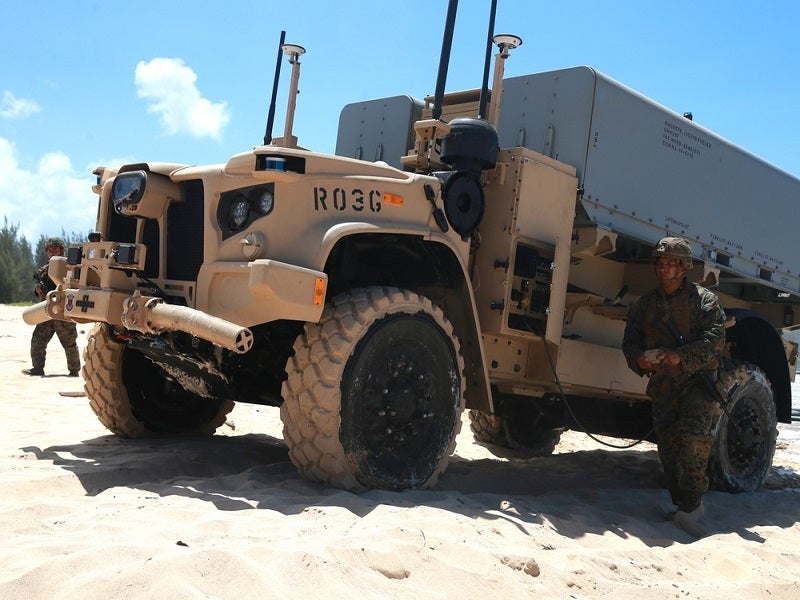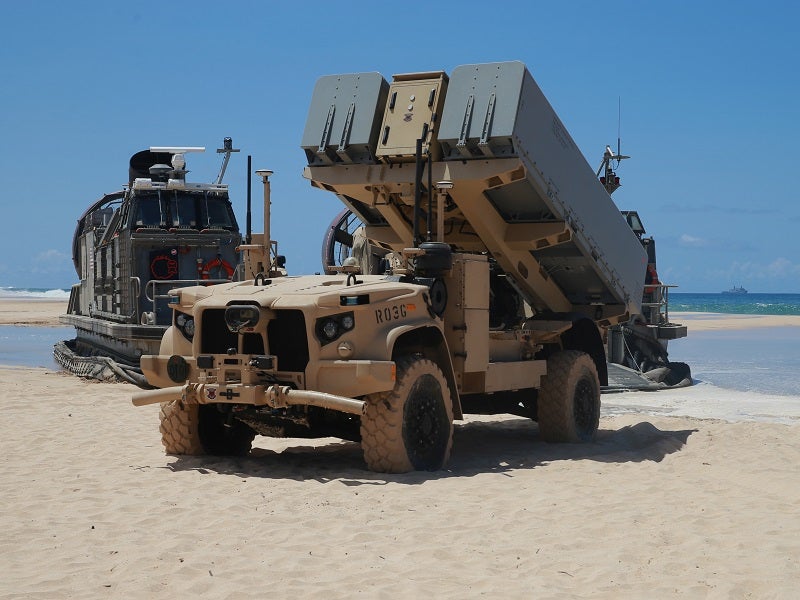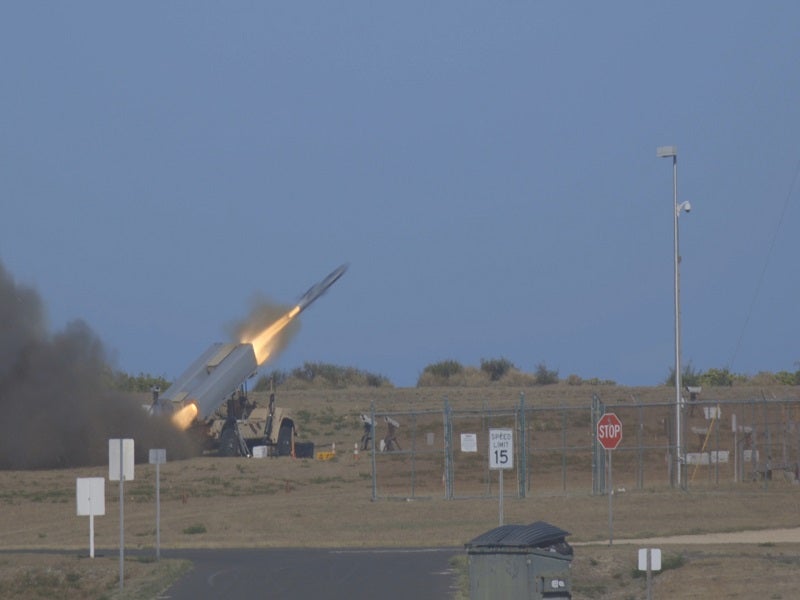The Navy Marine Expeditionary Ship Interdiction System (NMESIS) is an anti-ship missile system developed for the US Marine Corps (USMC) to support land-to-sea attacks performed by the US Navy.
The NMESIS features the US Navy’s latest anti-ship missile, the Naval Strike Missile (NSM), mounted atop the chassis of an unmanned variant of the Oshkosh Joint Light Tactical Vehicle (JLTV).
The ground vehicle platform, known as Remotely Operated Ground Unit for Expeditionary (ROGUE) Fires vehicle, is supplied by Oshkosh Defense, while the NSM is jointly manufactured by Raytheon Missiles & Defense (Raytheon) and Norwegian company Kongsberg Defence & Aerospace.
The Marine Corps Systems Command (MCSC) acquired the NMESIS to meet ground-based anti-ship missile (GBASM) requirements of the USMC.
Testing of the NMESIS
The USMC and Raytheon successfully tested the NMESIS off the coast of California, US, in April 2021. An NSM was fired from the system against a surface target at sea.
The NMESIS system was successfully demonstrated at the Sink at Sea Live Fire Training Exercises (SINKEX) in Hawaii in August 2021. SINKEX is a part of the US Navy’s Large-Scale Exercise (LSE) 2021, a triennial exercise designed to test the operating concepts of the navy and USMC.
NMESIS launch vehicle details
ROGUE Fires is an unmanned ground vehicle variant of the Oshkosh JLTV. It incorporates advanced autonomous vehicle technologies, off-road mobility and high payload carrying capacity.
The vehicle is remotely operated using the teleoperator or leader-follower modes. It was built specifically for use by the USMC to support anti-ship operations from the ground.
Based on the JLTV chassis, the vehicle lacks a crew cab/body. It is integrated with sensors and cameras, with a launcher mounted atop the vehicle.
The flexible design of the platform allows it to be configured to meet different mission requirements. The vehicle can also be integrated with scalable and futuristic weapons later on.
Naval Strike Missile (NSM)
The NSM is a multi-mission cruise missile that can ably neutralise highly secure maritime and land targets. It is a versatile missile and lethal weapon, delivering heavy naval power. The missile can destroy enemy ships located more than 100nm away. Equipped with an advanced seeker, it provides high-precision capabilities.
The missile can escape enemy radars by performing manoeuvres and flying close to sea level. It carries a 226.79kg-class warhead and programmable fuse.
Command and control of the NMESIS
The US Army’s Combat Capabilities Development Command (DEVCOM) Ground Vehicle Systems Center (GVSC) is providing an autonomous solution based on its remote technology kernel (RTK) package for the NMESIS.
The autonomous software incorporated in the ROGUE Fires vehicle is based on a version of the RTK that is currently used by the US Army’s leader-follower programmes, namely Expedient Leader Follower (ExLF) and Autonomous Ground Resupply (AGR). The programmes involve multiple unmanned vehicles following a manned leader vehicle in support of US Army missions.
The USMC deployed the Networking-On-The-Move (NOTM)-Utility Task Vehicle for command and control during the LSE 2021. The NOTM vehicle is loaded with wireless satellite communication equipment. Other command vehicles used during the exercise were equipped with additional command and control equipment for enhanced battlefield awareness and target tracking.
Fire control system
NMESIS is not considered an autonomous launcher as its fire control system is not controlled by the self-driving system and autonomy technology.
The system is operated by a marine who is responsible for mission planning and firing of the missile.










